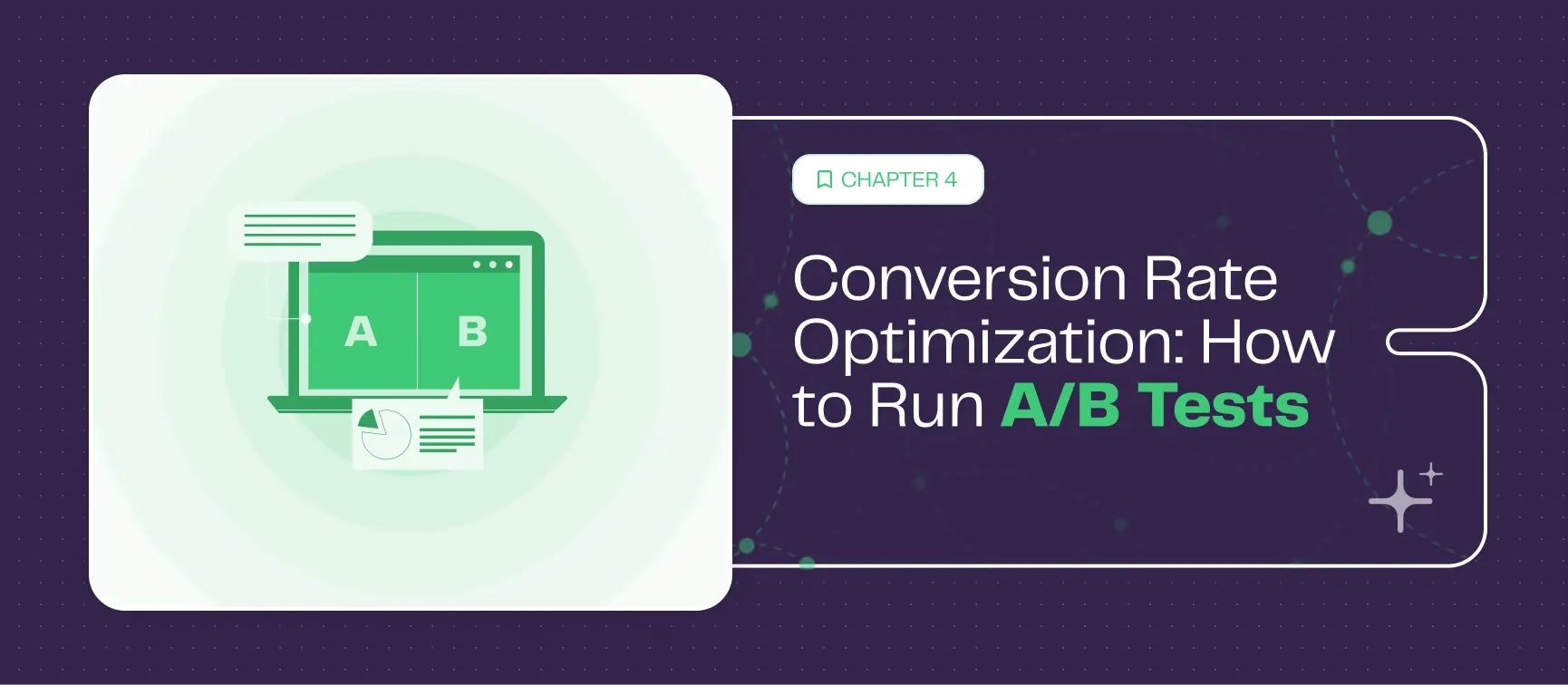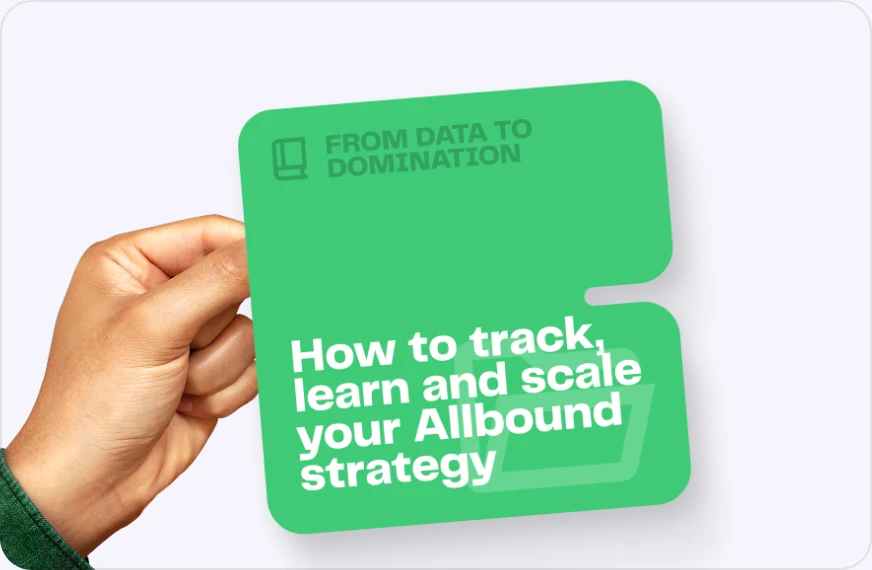
Here’s the truth: No Allbound strategy stays “great” forever. What works today can (and will) get stale. Buyer behavior shifts. Inboxes get noisier. Competitors copy your playbook. And that killer CTA you crafted six months ago? Feels like background noise now.
That’s why the best growth teams don’t set their strategy once. They test. Learn. Adapt. And do it on repeat.
They treat improvement not as a project but as a mindset.
A/B testing: the secret behind top performing campaign
When we say “continuous testing,” we’re not just talking about A/B subject lines. We mean:
- Experimenting with team structures
- Tuning copy mid-sequence
- Rethinking your funnel based on user behavior
- Stress-testing your targeting assumptions
Because here’s the thing: Your market is a moving target. If you don’t adjust, you miss.
Even the smartest A/B test will fail if your segment is off. Testing without clean segmentation is like optimizing a message no one should’ve received in the first place.
Why testing isn’t optional:
- The environment constantly shifts: What worked six months ago might be noise today.
- Buyer behavior evolves fast: Messaging fatigue is real. So are changing pain points.
- Competitors adapt: If you’re not iterating, someone else is—and they’ll steal your edge.
- “Hacks” die quickly: LinkedIn tricks, cold email formulas, inbox subject trends… all have a shelf life.
- Macroeconomics impact conversion: What your ICP prioritized last year may be irrelevant post-budget cuts.
What continuous testing unlocks:
- More intelligent resource allocation: No more guessing where to invest. Let the data point the way.
- Message-market fit in real-time: Stop relying on gut instinct. Start adjusting based on feedback.
- Sharper targeting: Run micro-experiments on segments to see who’s converting.
- Conversion process optimization: Every step, from lead magnet CTAs to demo handoffs, can be tuned.
- Risk reduction: Test slightly before scaling. Catch bad ideas before they eat the pipeline.
- Hyper-personalization: Not just “FirstName” variables—real, segment-level personalization based on behavior.
The teams that win are the ones that learn faster than their competitors. That means testing isn’t a side project. It’s the culture.
What are the solutions to iterate on your sales strategy?
1. A/B Testing, but make it smart
This is your day-to-day optimizer. But A/B testing isn’t about swapping button colors or changing “Download” to “Get.” That’s not a strategy—that’s UX cosplay. Real A/B testing focuses on substantive variation:
- Messaging angles
- Copy tone (authority vs. empathy)
- Sequence structure
- Pain point positioning
- CTA strength
Run tests like a product team would:
- Form a hypothesis (“CTAs that mention ROI will convert better than feature-based CTAs”)
- Launch a clean, controlled test
- Let the data run: statistical significance > gut feel
- Roll out the winner, archive the loser
- Repeat
A/B testing is only as good as what you’re testing. No one cares if your button is blue or green if the value prop is weak.
2. Cohort Analysis: slice the funnel, find the signal
This is where testing gets strategic. Cohort analysis means grouping leads based on a shared trait and tracking their behavior over time. Want to know which channels bring high-LTV leads? Which ICP segments convert faster? Which campaigns nurture best-fit customers? Cohorts give you that clarity.
Common cohort setups:
- By acquisition date (e.g., pre/post-product launch)
- By channel (LinkedIn vs. outbound email vs. Pay-Per-Click)
- By firmographic segment (company size, industry, region)
What to measure per cohort:
- Lead-to-opportunity conversion rate
- Sales cycle length
- Average deal size
- Upsell rate
- Retention or churn
Cohort analysis answers every CMO’s question: “Are we attracting the right customers—or just the ones who click?”
3. The Sales Lab: your R&D space for sales experimentation
This is your innovation playground—a dedicated space (team + process) for testing bigger bets, such as new strategies, pricing, sequencing models, and even sales motion shifts.
Think of it as R&D for revenue.
The Sales Lab process:
- Form your hypothesis: “What if we move personalization before the value prop in LinkedIn messages?”
- Design your experiment: Clear variables, tight scope, clean cohort.
- Test at a small scale: 50–100 leads max. Don’t burn the list.
- Measure and analyze: Use La Growth Machine (LGM) + CRM to track touchpoints, replies, and deal impact.
- Scale or iterate: Does it work? Systematize it. If not? Kill it and move on.
You can test:
- Sales messaging/frameworks
- Cold call or meeting structure
- Pricing strategy/offer positioning
- Tool adoption or channel mix
Real talk: This requires budget and team bandwidth. But if you want a competitive edge, you can’t just optimize—you must invent.
A/B Testing with LGM: Step-by-step guide
How to set up A/B testing in LGM
1. Choose the element to test
Rule #1: Test one variable at a time. Otherwise, you won’t know what moved the needle.
LGM gives you options to test:
- Email subject lines (your attention trigger)
- Email body content (your pitch engine)
- LinkedIn messages (your conversation starters)
- LinkedIn voice notes (your human touch at scale)
- LinkedIn connection request (your first impression, make it count)
Use Spintax to test advanced variations at scale. Its allows for micro-variations inside the same step (for example: {Hi|Hello|Hey there}). Even better: generate it with LGM’s built-in GPT assistant and let the AI do the heavy lifting.
2. Define your objective (Like you mean it)
Before you click “A/B,” know what you’re solving for. Are you optimizing:
- Open rates? → Tweak subject lines
- Click-through rates? → Focus on your CTA or layout
- Reply rates? → Hone in on tone, length, or personalization
Set your primary KPI in the LGM dashboard. This is what you’ll optimize against, everything else is noise.
3. Build your variations in the sequence editor
Use the A/B toggle inside any step of your sequence. LGM makes it frictionless:
- Keep structural consistency between variations
- Test bold changes, not just “Hi” vs “Hello”
Use Spintax to test messaging without creating bloated sequences.
4. Launch the A/B test in your LGM campaign
LGM handles distribution randomization for you, so you don’t need to do manual split testing or shuffle your lists in Excel.
- Ensure your audience segment is large and clean enough to detect meaningful differences.
- Use custom filters or pre-built LGM segments to define your target precisely.
Pro tip: Keep audience profiles consistent between tests; ICP skew will ruin your results.
5. Monitor performance in real-time
As soon as your test goes live, the data starts flowing.
Track performance directly in your LGM dashboard:
- Open rate per variation
- Click rate
- Reply rate
- Lead conversion (if integrated with CRM)
LGM also automatically tracks statistical significance; there is no need to run chi-square tests like in 2008.
6. Analyze. Learn. Scale.
Once results are in, go to Dashboard – Channel Statistics
Here’s where you are:
- Identify the winner
- Document insights
- Apply learnings to future sequences (or spin up a clone in seconds)
Don’t just stop at one win. Build a feedback loop. Every winning test becomes your new baseline. Then, you test again.
